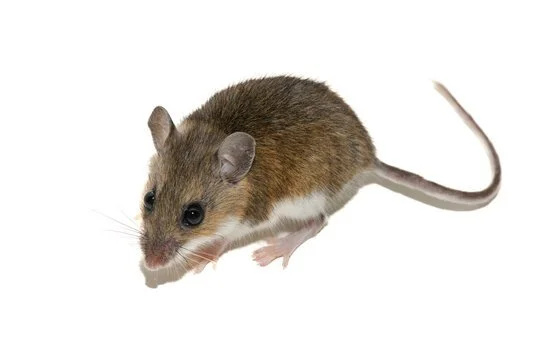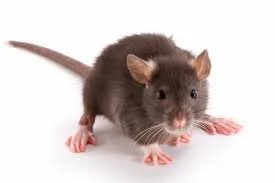
Rodents are among the most persistent and damaging pests a homeowner can deal with. Whether it’s scratching in walls, gnawed wires, or contaminated food, the presence of rats or mice requires prompt action. This guide gives you a solid foundation: what rodents are, the species you’re likely to see in East Texas, how to recognize them, where they hang out, how they behave, and why infestations matter.
Rodent Facts & Information
What Are Rodents & Why They Matter
Rodents are mammals of the order Rodentia, characterized primarily by a pair of ever-growing incisor teeth in both the upper and lower jaws. They must continuously gnaw to keep those teeth in check.
Some general traits:
Strong gnawing ability; they chew through wood, plastic, insulation, wiring, and more
High reproductive potential — many species breed quickly
Adaptability to human environments — they thrive around food, water, and shelter
Disease risk and contamination — their droppings, urine, saliva, and fur can carry or spread pathogens
Structural damage and fire hazard — rodents may undermine foundations, chew utility lines, and compromise insulation
Because rodents can hide in wall cavities, attics, basements, or crawlspaces, infestations often go unnoticed until they are well established.
-

Deer Mouse
Body: 2.5–4 in; Tail: 2–4 in. Brownish or gray upper body, white underbelly and feet. Large eyes and ears; bicolored tail (dark above, light below). Nocturnal and agile climbers.
Nests in attics, garages, sheds, or outdoor woodpiles and brush. Prefers quiet, undisturbed areas.
Health risk: Known carrier of hantavirus; avoid sweeping or vacuuming droppings without proper precautions.
-

House Mouse
Body: 2.5–4 in; Tail: roughly equal length. Gray or brown fur with lighter belly. Small and slender with pointed snout, large ears, and a long tail. Reproduces quickly.
Indoors: kitchens, basements, behind appliances, attics, pantries.
High infestation potential: Females can produce dozens of offspring per year. Major contamination concern.
-

Norway Rat
Body: 6–8 in; Tail: slightly shorter than body length. Brown or gray fur, lighter underside. Large, heavy body, blunt nose, small ears. Poor climbers but excellent burrowers.
Burrows under foundations, decks, sheds, and in basements or crawlspaces.
Destructive: Gnaws wiring, wood, and pipes. Known to spread diseases like leptospirosis and salmonella.
-

Roof Rat
Body: 6–8 in; Tail: longer than body length. Sleek black or dark brown fur. Slender build, pointed snout, large ears, long tail. Excellent climber.
Found in attics, rafters, walls, ceilings, and upper parts of homes.
Fire hazard risk: Often chew insulation and wiring in attics. Known to contaminate food storage areas.
Where They Live & How They Behave
Outdoor & Perimeter Areas
Deer mice: prefer natural ground cover, logs, brush, fields; they nest in hollow logs, beneath debris, or in rodent burrows.
House mice: forage near building edges, under mulch, near foundation cracks, in storage piles.
Norway rats: dig burrows near foundations, under debris, or within dense clutter near the home.
Roof rats: use trees, shrubs, vines, or utility lines to access higher regions of a structure.
Indoor / Structural Areas
Wall voids, ceilings, attics, basements, crawlspaces are prime locations.
They often establish nests in quiet, undisturbed areas (storage, boxes, insulation).
They travel along plumbing lines, conduits, wiring, wall edges, ceiling joists.
Rodents are nocturnal, so activity is highest at dusk through dawn.
Behavior Patterns
Gnawing: Rodents chew constantly to maintain their incisors. They will chew wood, insulation, plastic, wire, etc.
Foraging: They travel predictable pathways between their nest and food sources.
Reproduction: Many species breed fast in favorable conditions (ample food, shelter).
Contamination: They leave urine, droppings, hair, and saliva along their paths and near food sources.
Risks & Consequences of Infestations
Rodents are more than just a nuisance; they bring multiple serious hazards:
Health & Disease
Hantavirus, especially from deer mice, can be deadly if inhaled from droppings or nesting debris.
Bacterial disease transmission: salmonella, leptospirosis, rat-bite fever, etc.
Contamination of food, surfaces, storage areas with urine, droppings, and fur.
Structural & Property Damage
Gnawing damages wood, drywall, plastic, insulation, even structural timbers or studs.
Chewed electrical wiring can trigger electrical failures or even fire hazard.
Damage to plumbing, conduits, HVAC ductwork, and ventilation components.
Economic Loss & Repair Costs
Replacing damaged wiring, insulation, stored goods, walls, etc.
Lost or spoiled food, disrupted living areas, cleanup costs, and treatment expenses.
Rapid Spread & Persistence
Because rodents reproduce quickly and can exploit small gaps, infestations often outpace DIY efforts.
If only a few are eliminated, others may fill in or relocate locally.
Secondary Pests
Rodents may carry ectoparasites like fleas, ticks, mites, or carry mites into the home.
What Homeowners Can Do & When to Call a Pro
Prevention & First Steps
Seal entry points (holes, gaps, utility penetrations, foundation cracks) — rodents can squeeze through very small spaces.
Store food in rodent-proof containers; keep trash lids secure.
Eliminate clutter, debris, woodpiles, dense vegetation near the structure.
Maintain distance between shrubs/trees and siding or rooflines (rodents often use those as bridges).
Inspect your home regularly (especially in attic, crawlspaces) for droppings, gnaw marks, or nesting signs.
Protect Your Home — Schedule a Free Inspection
If you’ve noticed droppings, scratching sounds, or chewed wires, don’t wait—rodents reproduce fast and can cause costly damage.
Contact Total Home Pest Solutions today to schedule a free rodent inspection and get expert help keeping your home protected year-round.
FAQs
1. How do I know if I have rats or mice?
Mice are smaller, with finer droppings (about 1/8 inch) and lighter scampering sounds. Rats are larger, leave bigger droppings (1/2 inch), and make louder scratching noises—often in walls or ceilings.
2. Are rodents dangerous to my health?
Yes. Rodents can carry diseases such as hantavirus, salmonella, and leptospirosis. Their droppings, urine, and nesting materials can contaminate air and food.
3. Why do rodents keep coming back even after trapping?
Rodents reproduce quickly and can enter through tiny gaps as small as a dime. Unless entry points are sealed and attractants removed, infestations may return.
4. Can I handle a rodent problem myself?
DIY traps can help reduce visible populations, but they often miss hidden nests. Professional pest control ensures complete removal and prevents re-entry.
5. How can I prevent rodents from entering my home?
Seal cracks and holes, store food in airtight containers, keep trash sealed, and trim tree branches near your roof. Regular inspections by a pest professional are the best defense.
